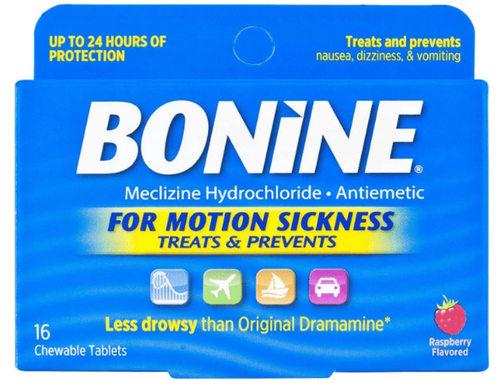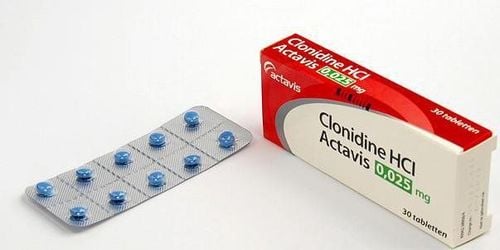This is an automatically translated article.
Vistaril medicine has the main ingredient is Hydroxyzine pamoate 50 mg, belongs to the group of antihistamines. Vistaril is commonly used in the treatment of allergies, anti-emetics in motion sickness, anxiety and stress... Find out information about Vistaril that will help patients improve the effectiveness of their treatment.
1. What is Vistaril?
Vistaril is made in capsules, with the main ingredients including:
Active ingredients: Hydroxyzine pamoate 50 mg. Excipients: Gelatin, Magnesium stearate, Sodium lauryl sulfate, Starch, Sucrose just enough for 1 capsule of 50 mg. Hydroxyzine pamoate has anti-histamine effects through competitive antagonism on H1 receptors, while Hydroxyzine pamoate also has anticholinergic, central nervous system depressant, antispasmodic and local anesthetic effects.
In addition, Hydroxyzine pamoate has antiemetic and anti-motion sickness effects, but the mechanism is still not fully understood. By reducing the activity of the subcortical central nervous system, Hydroxyzine pamoate has a sedative effect and reduces symptoms of anxiety and stress.
On the gastrointestinal tract, Hydroxyzine pamoate acts to slightly reduce secretions and antispasmodic gastrointestinal tract.
2. What does Vistaril do?
Vistaril is indicated for treatment in the following cases:
Treatment of allergy symptoms such as itching, urticaria. Helps treat symptoms of stress and anxiety. Sedation before and after surgery. Anti-vomiting, anti-vehicle. Aids in the treatment of agitation seen in alcohol withdrawal syndrome.
3. Contraindications of Vistaril:
Hypersensitivity to any ingredient in Vistaril. History of allergy to other medicines containing the active ingredient Hydroxyzine pamoate. History of hypersensitivity to other antihistamines. The patient has an electrical disturbance such as a prolonged QT interval. Pregnant women or those who are breastfeeding.
4. Dosage and how to use Vistaril
4.1. Anti-itching Adults and children > 12 years old
Initial dose: Take 1⁄2 tablets (25 mg)/time in the evening. Increase dose: Take 1 tablet (50 mg) / time x 2 times / day. Children
General dose: Take 1 mg/kg/day. Children 6 months - 6 years old: Take 5 - 15 mg/time in the evening. Increase to 50 mg/day or 2.5 mg/kg/day in 3 to 4 divided doses if necessary. Children 6-12 years old: Take 15-25 mg/time in the evening. Increase to 50-100 mg/day or 2 mg/kg/day in 3 to 4 divided doses if necessary. 4.2. Anti-anxiety Adult
Dose: Take 1-2 tablets (50-100 mg)/time x 4 times/day. Children > 6 years old
Dose: Take 1-2 tablets (50-100 mg)/day in divided doses. Children < 6 years old
Dose: Take 1 tablet (50 mg)/day in divided doses. 4.3. Before or after general anesthesia Adults
Dose: Take 1-2 tablets (50-100 mg)/time. Children
Dose: Oral 0.6 mg/kg. 4.4. Patients with impaired hepatic and renal function Hepatic impairment: Reduce by 1/3 of the usual dose. Renal impairment: Reduce the usual dose by 1/2.
5. Notes when using Vistaril
5.1 Side effects encountered when using Vistaril Treatment with Vistaril in high doses or for a long time, can cause side effects such as:
Common: Headache, fatigue, restlessness, dizziness, increased weight loss, nausea, diarrhea, abdominal pain, dry mouth, joint pain, sore throat, drowsiness, thick bronchial secretions. Uncommon: Depression, lethargy, paradoxical excitability, insomnia, palpitations, hypotension, edema, angioedema, photosensitivity, rash, urinary retention, bronchospasm, epistaxis, hepatitis , myalgia, tremor, paresthesia, blurred vision. Rare: Muscle and limb tremor, convulsions, loss of coordination, involuntary motor activity, psychomotor impairment, increased excitability. When detecting the above undesirable effects or any other abnormalities after taking Vistaril, patients and relatives should promptly inform their doctor or pharmacist about the use of Vistaril or go to a medical facility immediately. for timely treatment.
5.2 Notes on the use of Vistaril in subjects Be careful when using Vistaril in the elderly, people with a history of or are suffering from narrow-angle glaucoma, bronchial asthma, chronic obstructive pulmonary disease, gland enlargement. prostate, bladder neck obstruction. Ventricular arrhythmias, ventricular decompensated heart failure and arrhythmias, recent myocardial infarction, family history of long QT syndrome, congenital long QT syndrome, and other conditions predisposing to QT prolongation. Pregnancy: The US Food and Drug Administration (FDA) has not determined evidence of harmful effects of hydroxyzine active ingredient in pregnant women. Therefore, Vistaril is contraindicated in pregnancy. Lactation: There are no data regarding the presence of hydroxyzine in breast milk. Therefore, Vistaril is contraindicated in lactating women. Drivers or machine operators often experience side effects that reduce concentration and alertness after using Vistaril.
6. Vistaril drug interactions
Interactions with other drugs
Drugs that decrease the effect of Vistaril: Amphetamine Acetylcholinesterase Inhibitors Drugs that increase the effect of Vistaril: Droperidol Methotrimeprazine Pramlintid Vistaril enhances the effect of drugs that depress the central nervous system , thereby causing excessive sedation: Opiates Pain relievers Barbiturates Anesthesia, anesthesia Vistaril alcohol combined with topical antihistamines may increase the risk of side effects. Above is basic information about ingredients, uses, doses and precautions when using Vistaril. In order to bring about the best treatment effect, patients and their relatives should carefully read the instructions for use of Vistaril, and strictly follow the treatment instructions of the doctor.
Please dial HOTLINE for more information or register for an appointment HERE. Download MyVinmec app to make appointments faster and to manage your bookings easily.













